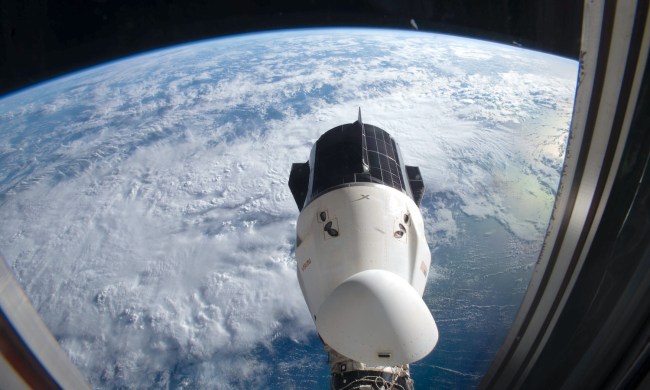With numerous wildfires currently raging across western U.S. states, firefighters tasked with tackling the blazes need all the help they can get.
Modern technology is lending a much-needed hand and includes a special piece of equipment aboard the International Space Station orbiting 250 miles above Earth.
NASA’s ECOsystem Spaceborne Thermal Radiometer Experiment on Space Station (ECOSTRESS) is currently assisting crews dealing with the enormous wildfire in Bootleg, Oregon, which started in early July and as of two days ago had charred more than 400,000 acres of land, taking people’s homes and vehicles with it.

The ECOSTRESS technology, which arrived at the orbiting outpost in 2018 and is operated by NASA’s Jet Propulsion Laboratory, is able to measure the surface temperature of any place on Earth.
“Its ability to observe fires of the Northwest U.S. often twice per day at a high spatial resolution (around 70 meters) makes it ideal for tracking fires,” NASA said.
Data from ECOSTRESS is sent to a team at the Rapid Analytics for Disaster Response (RADR) at the Pacific Northwest National Laboratory, which uses it to advise first responders like the U.S. Forest Service.
ECOSTRESS has been monitoring the spread of the Bootleg fire and, at the same time, looking out for any risk to critical infrastructure.
The areas appearing in red in the image below represent the hottest pixels detected by ECOSTRESS, giving those on the ground a clear idea of where resources are urgently needed.

ECOSTRESS has also been sending back data from the fire in Dixie, California, which doubled to more than 220,000 acres in recent days.
“The capabilities of ECOSTRESS are unique,” NASA said, adding that satellites that acquire data more frequently “don’t have [a] high enough resolution to track the fine line of the fire front, and satellites with higher resolution than ECOSTRESS cross over the same area much less frequently (every five to 16 days).”
As NASA points out, while fire crews have many ways to tackle major blazes like those in Bootleg and Dixie, data from space-based technology capable of assisting their efforts is a relatively new development and also an excellent demonstration of how satellites high above Earth can help us here on the ground in a timely and meaningful way.


